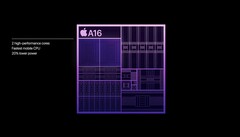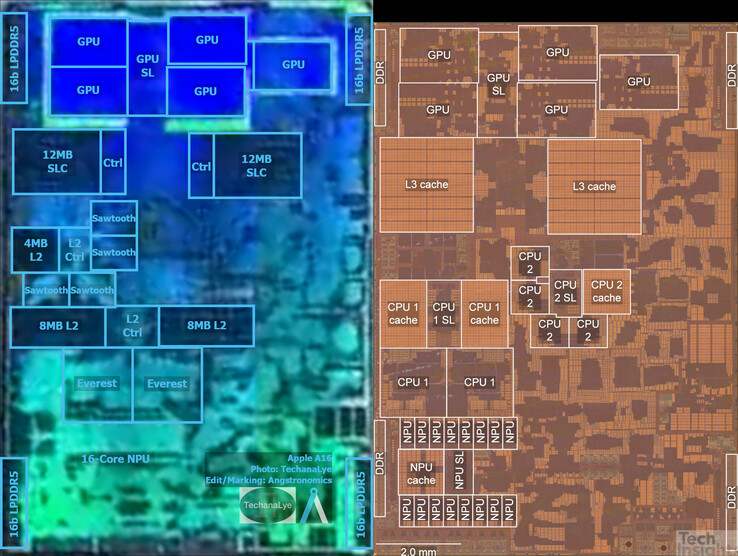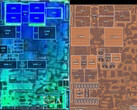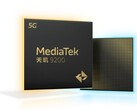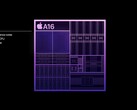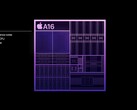Apple's vague messaging around the A16 Bionic's relative performance compared to its immediate predecessor came off as a bit suspicious. The benchmarks that followed were also a mixed bag, with one set showcasing minimal performance gains and the other painting a rosier picture. A die shot of the A16 Bionic has now been made available by Angstronomics, giving us a decent idea about its innards.
The A16 Bionic retains most of the design elements of its predecessor, the A15 Bionic, but uses new performance (Everest) and efficiency (Sawtooth) cores in a 2+4 configuration. The five-core GPU has remained largely untouched; Apple claims that it has 50% more memory bandwidth, presumably due to the new LPDDR5 6,400 RAM that made its debut alongside the A16 Bionic.
Given that the A15 Bionic's TSMC N5 and the A16 Bionic's N4 node belong to the same family, there isn't much scope for a transistor count upgrade. Nonetheless, Apple fit 16 billion transistors (one billion more than the A15) in its new SoC, many of which are probably earmarked for the new Photonic Engine. It comes with a corresponding increase in die size and other design compromises.
Both the A16 Bionic's Everest (P) cores now have access to a total of 16 MB L2 cache (vs 12 MB on the A15). On the other hand, the System Level Cache (SLC) has been slashed to 24 MB from the A15 Bionic's 32 MB. Angrstronomics opines that the increased memory bandwidth should offset the lower cache value. More information about the A16 Bionic and its components should become apparent once clearer images are available.
Overall, the A16 Bionic is, at best, an incremental upgrade. Despite that, it continues to remain miles ahead of the competition. One can expect major redesigns in next year's A17 Bionic. It is slated to be manufactured on TSMC's new N3E node, provided it enters volume production in time. If N3E heads down the same path as the (now-doomed) N3, The A17 will be the fourth Apple mobile AP on the N5 family and its performance gains will be equally unimpressive.




